सजावटी पत्तेदार पौधे वयस्क तेल ताड़ के बागानों के लिए आदर्श अंत: फसलें
Ornamental plants grown for foliage or leaves are called cut foliage plants or greens. Background and shape of the flower arrangements are mainly decided by foliage. Most of the foliage plants are perennial in nature, common ornamental garden/ indoor plants, shade loving and shade tolerant and they can up well under dense shady environments.
Oil palm (Elaeis guineensis Jacq.) is the fasting growing plantation cum oil seed crop which is grown to extent of 4.00lakh ha in the country. It is a perennial crop with a productive life of 30 years and yields about 5 tonnes palm oil per hectare.
Grown up oil palm utilizes only 40% area for its growth and production and rest of the area (60%) remains vacant which offers the scope for efficient use of natural resources like space, sun light and aerial environment through inter cropping. However, the major constraint in grown up oil palm plantation is incidence of poor sun light which hardly ranges from18-25% which offers the scope for shade loving crops to some extent.
Studies at ICAR-Indian Institute of Oil Palm Research, Pedavegi, Andhra Pradesh revealed that foliage plants like fish tail fern, asparagus, fox tail fern, ti plant, philodendron, dracaena, dumb cane and aglaonema have been identified as most suitable inter crops under dense shade (75-82%) of grown up oil palm plantations.
Foliage plants produce leaves round the year and there is a good demand for foliage in flower markets of the country. Cultivation of foliage plants is very simple and it fetches good amount of income to farmers regularly with minimum investment and efforts. Therefore, there is a vast potential for cultivation of cut foliage plants commercially in oil palm plantations.
Agro-climatic requirements and management aspects of successful cut foliage plants under the micro-climate of grown up oil palm plantations are described below:
Climate and soils for cut Foliage plants:
Foliage plants require warm and humid climate with partial to moderate shade. Filtered light is ideal for their growth and leaf production. Though they can come up in wide range of soils, well drained and fertile soils having pH of 6.5-7.5 are most preferred. Optimum temperature is ranged from 18-350C. Results of the study have proven that the micro climate of oil palm plantation is suitable for foliage plants.
Propagation and establishment:
Foliage plants are normally multiplied by suckers/divisions (asparagus, aglaonema, fox tail fern, philodendron and fish tail fern), tip or stem cuttings (ti plant, dracaena, dumb cane, philodendron and aglaonema) and spores (fish tail fern).
Farmers can procure the planting material either from the government or private nurseries. Approximate cost of planting material is varied from Rs.5-15 per piece. The best time for planting is rainy season, though it can be taken up round the year.
The recommended spacing for asparagus, fish tail fern, ti plant and dracaena is 60cm x 60cm, 60cm x 45cm for philodendron, fox tail fern and aglaonema and 90cm x 90cm for dumb cane. All the above plants have to be planted in inter space only in four rows except dumb cane which can be planted in three rows.
Intra/ columnar space can be avoided/ kept vacant for the ease of cultural operations of oil palm. Every fifth inter space of oil palm plantation can be left vacant for the movement of farm machinery for loading of oil palm fruit bunches.
Density of plant population per hectare of oil palm plantation is about 7,560 plants in asparagus, fish tail fern, ti plant and dracaena, 10,080 plants in case of fox tail fern, philodendron and aglaonema and 3780 plants in dumb cane. Foliage plants take about 3 months to get established.
Water and nutrient management :
Most of the foliage plants need moderate moist soil condition for better growth and foliage production. There should be a separate irrigation system (drip) for foliage plants as the requirement of water is less than oil palm. Scheduling of irrigation can be as per the need and season. Water requirement is less during winter months as the growth of plants becomes slow.
Organic manures like cattle/poultry manure @1kg or
Plant protection:
There are no serious insect pests, diseases and nutrient disorders in foliage plants. However, leaf spots, root rot, spider mites, scales, aphids and mealy bugs are the reported pests of cut foliage plants.
Harvesting of cut foliage plants:
Cutting of fully expanded and matured leaves can be done from 5 or 6 month onwards at monthly gap. Leaves have to be cut with sharp sickle or secateur without causing damage to plants. Harvested leaves can be placed in plastic buckets containing a layer of water for an hour, packed in carton boxes or bundles and sent to the markets.
Replanting of foliage plants:
There is a need for replanting after 2 years in case of dumb cane, 3 years in aglaonema and 5 years in rest of the cut foliage plants. Farmers/growers can use the same planting material for replanting. Only the location of plants has to be changed at the time replanting to avoid pest incidence.
1. Asparagus (Asparagus densiflorus cv.Sprengeri):
This is the most popular cut foliage used in our country. Plants are spreading type with beautiful shoots measuring up to one meter. These shoots form large cushions with long, arching stems covered densely with dark green needle like leaves. Annual leaf yield is about 2.6lakhs/ha. Shoots have shelf life for 6 days at room conditions in tap water.
2. Fish tail fern (Nephrolepis falcateforma):
There is an enormous potential for this plant in flower markets. This is bushy, fast growing and height of theplants is about one metre. Leaves measuring from 50-100cm length are very attractive and have shelf life of 7-10 days at room conditions in tap water. This is a heavy yielder and average foliage yield is about 4lakhs/ha/annum.
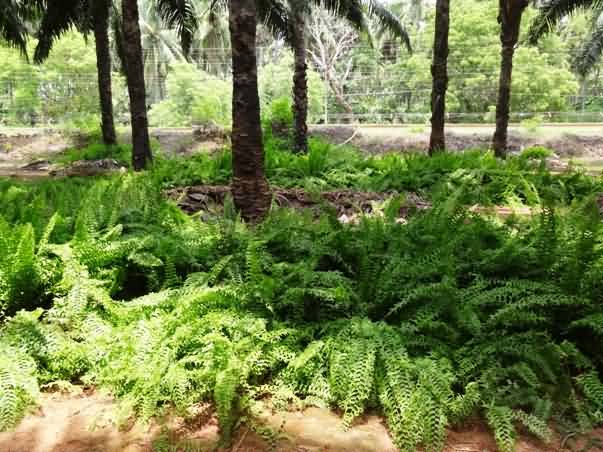
3. Fox tail fern/cat tail asparagus (Asparagus densiflorus cv. Myers):
It is one of the common cut foliage plants grown in the country. Plants are perennial, ever green, short statured with upright shoots with light green needle like leaves.
Shoots are very attractive with fine needle like leaves appear like cat’s or fox’s tail. Length of the shoots is varied from 30-60cm. Yearly, about 2.5lakh leaves can be produced and shoots last for 6-7 days at room conditions in tap water.
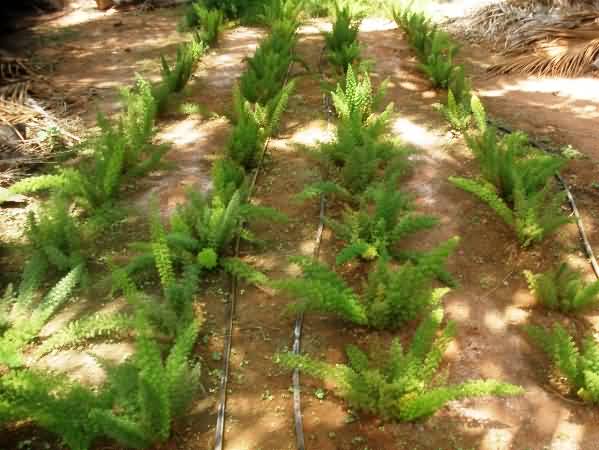
4. Ti plant (Cordyline terminalis):
It is becoming quite popular and its consumption is picking up in flower markets. Ti plant has upright clumping growth habit, bears elliptic lanceolate leaves with attractive variegated or coloured foliage.
Stem is like cane, grows up to 3m height within 5 years. Young leaves are bright red colour and turn to copper colour when they become mature. Expected annual leaf yield is about 1.80 lakhs/ha.
There is a seasonal variation in colour of young foliage particularly during summer, young leaves also turn to copper colour. Shelf life of leaves is varied from 8 to12 days at room conditions in tap water.
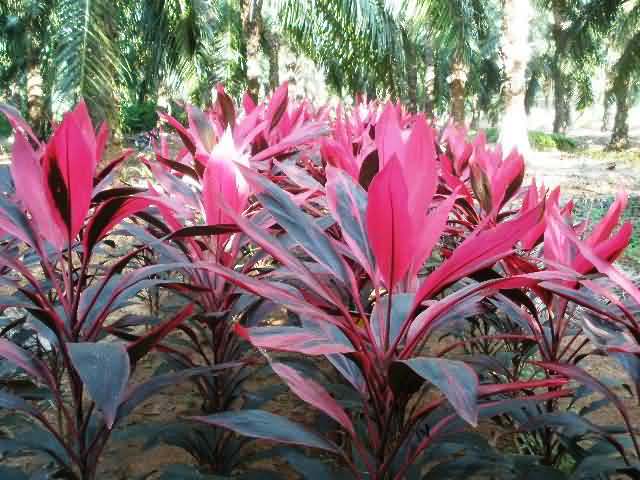
5. Dracaena (Draceana sps.):
It is one of the popular cut foliage plants used in various flower arrangements. This is having upright growth habit with drooping leaves. Leaves are sword shaped, leathery and green coloured margined by yellow colour.
It grows up to 3m height within 5 years and produces 1.45lakh leaves/ha/year and leaves are having 15 days shelf life at room conditions in tap water. Cultural practices of dracaena are almost similar to ti plant.
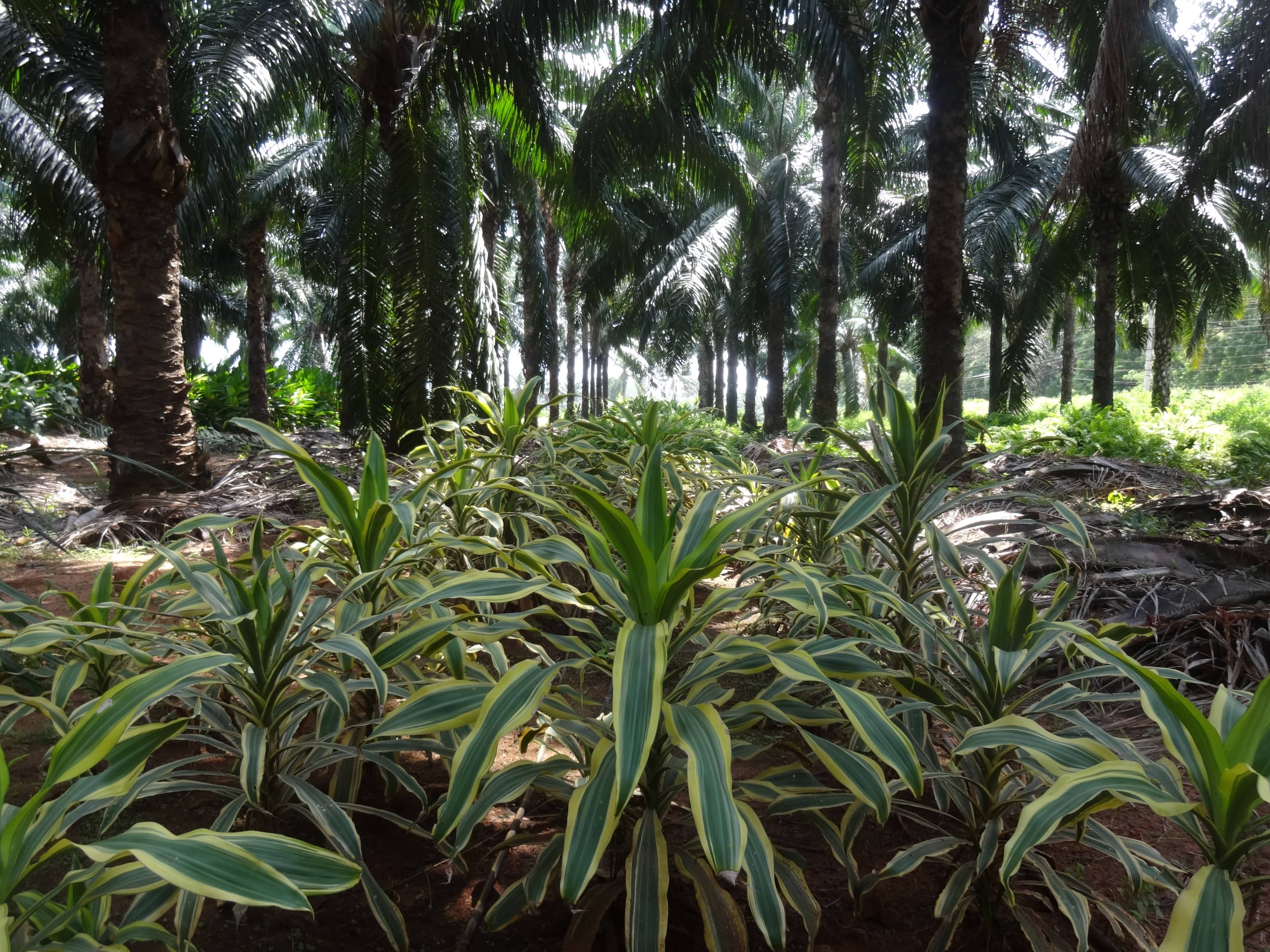
6. Philodendron (Philodendron xanadu):
It is compact and quick in growth. Leaves are very attractive, glossy green, leathery, deeply lobed, arrow shaped and widely used in flower arrangements. This is short statured and average height of the plant is about 40cm.
On an average, it yields about 2.4 lakh leaves/ year/ ha and leaves have very good shelf life (14days) at room conditions in tap water.
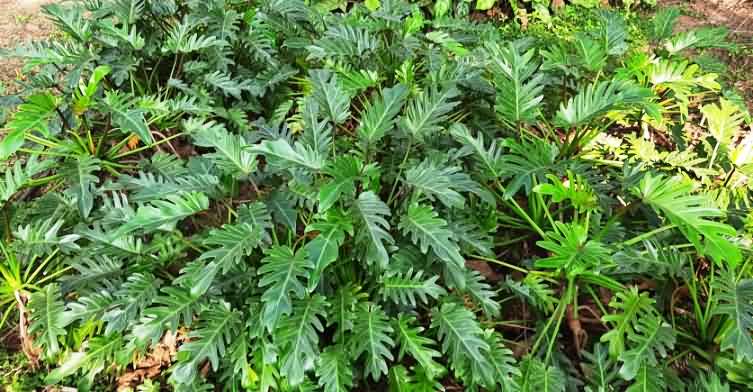
7. Dumb cane (Dieffenbachia sps.):
Dumb cane is the most popular indoor plant. Its leaves are thick, oblong to ovate with white to milky white spots and flecks. These leaves are ideal for stage decorations which give mat like background.
This grows to a height of 5-6’ within three years. It produces 2.2lakh leaves/ha/annum. Leaves have shelf life of 12-15 days at room conditions in tap water.
8. Aglaonema (Aglaonema sps.):
Aglaonema is a common indoor plant. There can be a good demand for these leaves in future. Average height of the plants is 45cm. Leaves are thick, elliptic to lance shaped and dark green with silvery grey patches.
Shelf life of leaves at room conditions is about 12 days in tap water. Yield of the leaves per hectare per year is about 1.2lakhs.
Economics of foliage plants
On an average, cut foliage yield for aforesaid ornamental crops can be taken as 2 lakh leaves/ha/year and expected net income is about Rs.30,000/ha. Foliage plants offer a bright opportunity for oil palm growers to make a good profit as there is a great demand for cut foliage in flower markets of the country.
Hence, cropping systems approach is the best way for doubling farmers’ income which is the slogan of Atma Nirbhar Bharat.
Authors:
*K. Ramachandrudu, K. Manorama and R. P. Premalatha
ICAR-Indian Institute of Oil Palm Research, Pedaveg-534 435, Eluru District, Andhra Pradesh.
*email:
